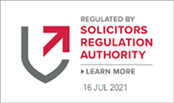
The Sentencing Council has published a new sentencing guideline for the unlawful importation of firearms. The Council is an independent body, accountable to Parliament, responsible for developing sentencing guidelines for the use of the judiciary and criminal justice professionals. They monitor the use of the guidelines and assess and review decisions relating to sentencing. Sentencing guidelines must be followed unless the court is satisfied that it would be contrary to the interests of justice to do so in all the circumstances of the case.
In 2017 the Council decided not to proceed with a similar guideline bit following an increase in cases a need was identified. The guideline is being introduced following a consultation in 2019, which led to requests from the Crown Prosecution Service and the National Crime Agency.
The guideline covers two offences, sections 50 and 170 of the Customs and Excise Management Act 1979. The offences are the improper importation of goods and the fraudulent evasion of prohibition or restriction. The types of weapons involved are listed under sections 1, 5(1) and 5(1A) of the Firearms Act 1968.
The first step in the guideline is to determine the offence category initially by identifying the type of weapon. Three types of weapons are listed as follows:
- Type 1 – a weapon that is designed or adapted to be capable of killing two or more people at the same time or in rapid succession;
- Type 2 – weapons falling between types 1 and 2, ammunition where not at type 3;
- Type 3 – a weapon that is not designed to be lethal or a very small quantity of ammunition.
For type 1 weapons, the phrase “is designed to be capable” is the same as used in another firearm guideline and applies even where the firearm is incomplete or not functioning.
The next stage is to assess other culpability factors related to role, planning and expectation of financial or other advantages.
Culpability is split into three levels – high, medium and low.
High culpability – leading role in a group activity, significant planning including steps to evade detection, abuse of position of trust or responsibility, expectation of substantial financial or other advantage, involves others through coercion, intimidation or exploitation.
Medium culpability – significant role where part of a group activity, some degree of planning, expectation of significant financial or other advantages, other cases falling between higher and lower culpability.
Low culpability – a lesser role where offending is part of a group activity, involved through coercion, intimidation or exploitation, little or no planning, expectation of limited if any, financial or other advantages.
The type of weapon and the ‘other culpability factors are then combined to give one of four overall culpability levels, A, B, C or D. Only non-lethal weapons will ever fall into the lowest starting point, and where a lethal weapon is involved, the category range will always include a custodial sentence.
Once culpability is decided, the sentencer will move to an assessment of the level of harm. Harm is assessed by reference to the scale and nature of the importation and not by reference to the offender’s role or whether the importation was intercepted. There are three levels of harm:
Category 1 – a large-scale commercial enterprise that may include a large number of firearms/ammunition, an operation over a significant period or close connection to other serious criminal activity.
Category 2 – a medium scale enterprise and/or some degree of sophistication, including groups that fall in between categories 1 and 3.
Category 3 – a smaller-scale and unsophisticated enterprise; this may include a limited number of firearms/ammunition or a minimal or no connection to other serious criminal activity.
The level and harm and culpability provide a sentencing range with a starting point. Aggravating and mitigating factors offer guidance as to where within the range the appropriate sentence falls. Some suggestions for aggravating or mitigating factors are listed in the guideline, but it is not exhaustive. Statutory aggravating factors are previous convictions (having regard to relevance and the age of the convictions) and where the offence was committed on bail. Other aggravating factors include others being put at risk of harm by the method of importation, use of a business as a cover and attempting to dispose of the firearm or other evidence.
Factors reducing seriousness or reflecting personal mitigation include a lack of convictions, the firearm being incomplete or incapable of being discharged, co-operation with the investigation, early admission and a lack of maturity.
The guideline was published on 24th November and will come into effect on 1st January 2022; it applies to adult offenders convicted of importing prohibited or restricted firearms. Once the guideline is implemented, the Council will monitor its impact.
Contact Broadbents Solicitors
We ensure we keep up to date with any changes in legislation and case law so that we are always best placed to advise you properly. If you would like to discuss any aspect of your case, please contact our expert team here at Broadbents Solicitors.
We cover various fields of law, ensuring that you have access to expert legal advice. You can call our dedicated team today: Alfreton 01773 832 511, Derby 01332 369 090, Heanor 01773 769 891, or Sutton-in-Ashfield 01623 441 123. Alternatively, you can head over to our online enquiry form and we’ll be in touch.
[Image credit: © Crown Copyright reproduced under licence]






